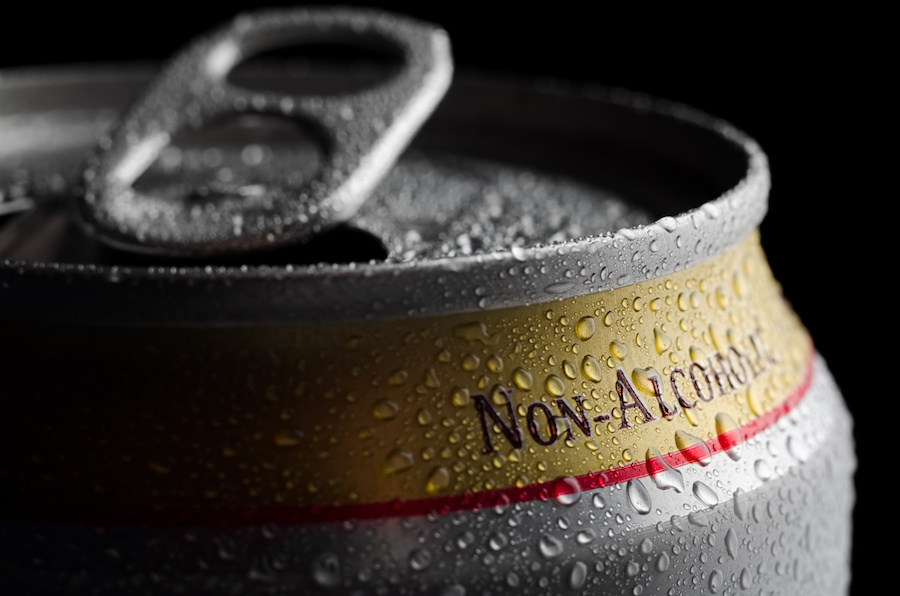It’s that time of year again -- Dry January. Although decidedly difficult to observe for those of you in the industry, Dry January is a UK-based public health campaign that’s recently made its way to our side of the Atlantic. Whether Dry January is directly responsible for today’s topic or not, that’s hard to say. But, there’s no doubt that breweries and consumers alike have recently turned their eyes to the Dry January philosophy. In the past, we’ve talked about Low-ABV. Well, there’s a new kid on the block: No-ABV. A resurgent interest in No-ABV beers marked 2019, and 2020 seems poised to double-down on that. Guinness, Heineken, St. Pauli Girl, Budweiser, and other industry heavyweights have all expanded their nonalcoholic options in recent years, and industry analysts are predicting nothing but upwards trend for the niche segment. Today, we’re going to get into the “why and what” of this recent phenomenon -- and trust us, once you see the numbers, you just may become a believer.
But, before we get into those numbers, perhaps we should do a little digging into the ‘why’ of it all.
Well, pardon our cynicism, but to answer this you just need to follow the money. Many major breweries have seen stagnant or slumping sales in recent years, whereas the few non-alc options have continued to grow. In fact, Reuters reported sustained growth in Europe during a period of decline for the beer market as a whole. Heineken brand director Gianluca Di Tondo sees this as a sign of things to come, having recently been quoted as saying: “You could expect 10 to 15 years down the road this would be more or less the global trend.”
This increased interest in non-alcoholic beer comes from a renewed focus on healthy living and ‘clean’ diet choices by young people. Non-alcoholic beer isn’t just an alternative to beer, but also to sugar-heavy sodas and soft drinks. And while only .3 percent of the beer market has been non-alc in recent years, 30% of Americans don’t consume alcohol. So, it’s no surprise that breweries are getting in on the action. With a market that seems primed for success, many breweries are already seeing massive growth amongst their no-abv beer options.
Heineken 0.0 (613% growth in volume from Q1 this year)
Heineken’s brand director was recently quoted as saying, “We want to make Heineken the leading global beer brand in 0.0.” Well, they’re doing a bang-up job so far. According to our own internal numbers, the 0.0 offering from Heineken saw a 613% growth from Q1 this year, signaling massive growth for Heineken’s 0.0 and the non-alc segment as a whole. Heineken 0.0 has been available in parts of Europe since 2017, but only recently landed in the United States, as the N/A segment continues to grow here. Unlike many N/A beers, Heineken isn’t just stripping beer of its booze, but instead creating an alcohol-free beer from the ground up.
Red Hare Root Beer
Georgia’s Red Hare brewery is mostly known for its fine craft offerings. They create a diverse selection of classic craft beers that are both interesting and approachable. But, they’ve now begun to dip their toes into the no-ABV world with a craft, handmade Root Beer. And perhaps this approach to root beer can be seen as very traditional: originally, root beer was brewed to a very week 2% ABV, putting it at near-negligible levels of booze.
Whatever the case is, Red Hare has seen nothing but success with its specialty root beer. It’s experienced a staggering 198% growth since Q1 of 2019, proving that the no-ABV thing is more than just a blip on the brewery’s radar.
Krombacher Pils NA
A far cry from the O’Douls we all drank in high school, Krombacher’s no-ABV option is a traditionalist take on the new N/A trend. The Krombacher brewery was founded in 1803, and has been taking the old-world, German approach to brewing ever since. Their Pils is what put the brewery on the map, and remains their most popular offering today.
However, their N/A options are making waves as well. Krombacher prides themselves on their ability to make their N/A German Pils with the full body and flavor as the boozy version. In fact, it’s even brewed the exact same way, before it goes through their in-house developed de-alcoholization process. Whatever they’re doing, they’re doing it well -- this tasty, full-flavored N/A option has seen a massive 188% growth since Q1 of 2019. As they say, the proof is in the pudding.
Clausthaler Premium NA
Credit where credit’s due: Clausthaler was well ahead of its time. In the early 1970s, they began their pursuit of the perfect non-alc beer. By all accounts, they have since succeeded. Originally a Germany-only product, the company’s line of non-alcoholic beers have expanded to over fifty countries (and counting). With a variety of non-alc options, Clausthaler is veritably killing the N/A game. From our internal numbers, they’ve seen a 170% growth in total volume since Q1 of 2019.
And with offerings that include Lemon, Unfiltered, and Dry Hopped versions of their N/A brew, the company shows no signs of slowing down -- quite the opposite in fact. If you’re looking for the N/A version of a traditional German brew, look no further.
St. Pauli Girl NA
Another classic gone N/A. And quite successfully, we might add -- St. Pauli Girl N/A is a Gold Medal winner for the American Tasting Institute’s “Best Imported Non-Alcoholic Malt Beverage”. This subtly sweet, crisp N/A beer isn’t a 1:1 substitute for their alcoholic offerings, but it’s a darn-good N/A brew. With a pleasantly hoppy flavor that features a light biscuity flavor, St. Pauli’s N/A offering is immensely drinkable and endlessly enjoyable.
But don’t take our word for it: this one’s seen a 143% growth in order volume since Q1 of this year.



Comments